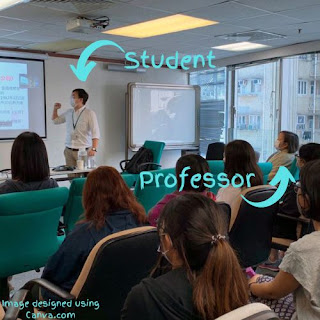International Look at Higher Education
This past week Erica and I visited India (Nadiad, Gujarat) for a wedding. The wedding was opulent and the food heavily seasoned. While we were there, we met a lot of interesting people, which gave our trip an excellent intercultural flavor (so to speak).
Among my conversations was a discussion about university education in India, Norway, and the United States. I was speaking with an Indian woman who had relocated to Norway with her two boys, where she eventually became a marine biologist and professor at a Norwegian school of veterinary science. We talked about students, teaching, online education, and regional differences in schooling. Here are some of the highlights of that conversation:
Indian schooling is very regimented and controlled. As I understand it, this is comparable to East Asian schooling, where children complete highly structured curricula and compete to achieve at an extremely high level. They do not, however, get an opportunity to develop their abilities to think independently or critically or to solve unique problems. This is actually what the book In Defense of a Liberal Education is all about (that is, recognizing the potential of liberal education in East Asia). Consequently, South and East Asian students struggle with graduate programs that ask students to be self-directed.
In the language of self-determination theory and its application in autonomy-supportive teaching, Indian school children are controlled from an early age. Their personalities and interests and skills and gifts are inconsequential to the course materials and curricula. Everyone must complete the same sequence of courses. These students declare a college major to begin college immediately (there is no general education curriculum in India). Because they have never had an opportunity to explore their own interests or choose their own paths, it is not uncommon for young adults to find themselves with degrees and credentials in jobs they care little for. But it is also uncommon for mid-20-somethings to be six years into a degree with nothing to show for it.
Compare this to Norwegian schools, which, the marine biologist shared, operates more like a Montessori system. Class sizes are small (maximum of 27 students), and teachers work individually with students. Care is taken not to label students as gifted or needing support. There is a greater emphasis on the development of the person. Norwegian children are not pressured to succeed, but free to develop in their own unique ways. As an example of this, the marine biologist explained that her youngest son was struggling in his classes, barely squeaking by with Cs (though grades were often de-emphasized; there is a push to get rid of them. He would go on to study law, so he did alright...). She began to challenge him with incentives and so on, but the teachers came back and suggested that she stop pressuring her son and let him develop under their supervision.
From this I gathered that this Indian woman, who had been trained in the Indian education system, was attempting to subject her sons to the same learning environment she had had: high pressure and high expectation. But the Norwegian teachers interfered with this, asking her to back off and give her youngest son some space. In 15 years as a scientist and professor in Norway, she has been learning to adopt this style of teaching/learning.
She also asked about the learning environment in the States. She explained that the professors she knew in the US were extremely strict and old-fashioned, and that graduate students and postdocs suffered from the competitive atmosphere. I cannot speak to this directly, as that was not and has not been my experience. But it doesn't surprise me to hear about it, either. Most doctoral problems in the US are very schooling-heavy, where students complete more years of coursework before they get to work on an independent project, which is often just an extension of their mentor's research.
During the conversation I kept thinking about the suitability of autonomy-supportive teaching in each environment: the Indian schools would benefit tremendously, yet they would be the least willing/likely to adopt it; the Norwegian schools are probably already doing it, but might learn some new techniques or research support; and the US schools are somewhere in between.
As a closing thought, I will admit that I was somewhat relieved to hear that doctoral students in Norway exhibit the same sort of apathy and disinterest that I see in my own students. This means that schools that are devoted to supporting individual student growth still struggle to achieve it, at least at the higher levels of schooling. I also felt an instant connection when she shared her own feelings of disappointment teaching online courses. I am repeatedly reminded just how much of an unknown/untapped world asynchronous teaching/learning is.



Comments
Post a Comment